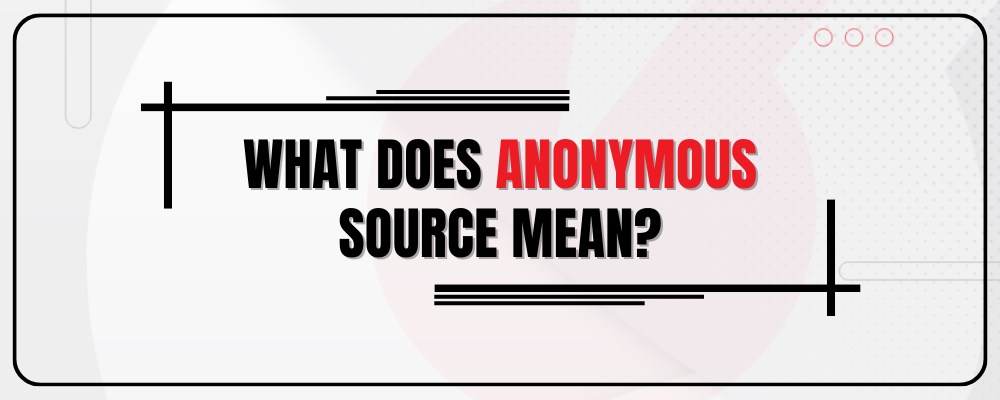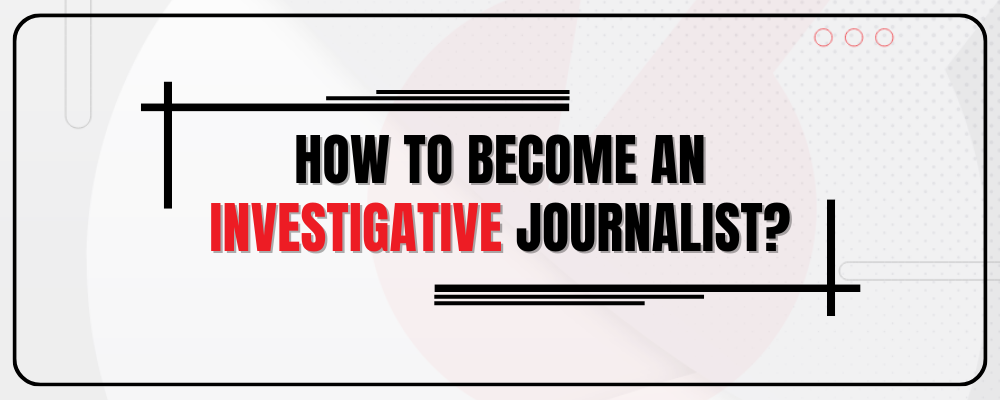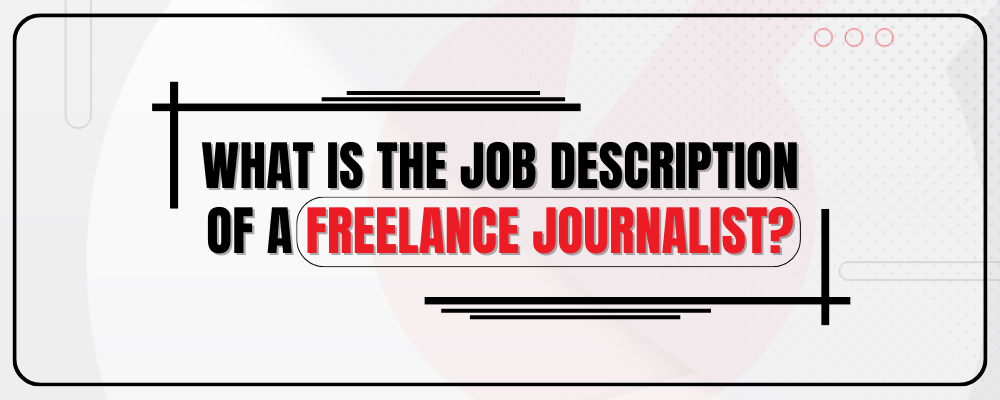Definition Of Anonymous Source
Anonymous sources are individuals who provide information to journalists without revealing their identity. Journalists often use anonymous sources to obtain sensitive or confidential information that would otherwise be difficult to access.
Example of an Anonymous Source
Let’s say a journalist is investigating allegations of corruption within a government agency.
An anonymous source, who is a current employee within the agency, reaches out to the journalist with information about fraudulent activities taking place.
The anonymous source, fearing retaliation or job loss if their identity is disclosed, provides detailed documents and insider insights on how funds are being misappropriated within the agency.
This information is crucial for exposing the corruption, but the source is not willing to go public due to the potential risks involved.
In the subsequent news article, the journalist might write something like:
“According to an anonymous source within the government agency, funds allocated for public projects have been systematically misused for personal gain. The source, a current employee with direct knowledge of the matter, provided documents and information detailing the alleged corruption. The identity of the source is being kept confidential due to concerns about potential reprisals.”
In this example, the anonymous source plays a key role in bringing to light information that might not have been accessible through conventional channels.
The journalist, in turn, has a responsibility to rigorously verify the information and present it to the public in a responsible and ethical manner.
Anonymous Source Example from the Real life story
One of the most famous examples of the use of anonymous sources in journalism is the Watergate scandal, which led to the resignation of U.S. President Richard Nixon in 1974.
The Washington Post’s investigative reporting on Watergate, led by reporters Bob Woodward and Carl Bernstein, relied heavily on information provided by an anonymous source known as “Deep Throat.”
Deep Throat was later revealed to be Mark Felt, the Deputy Director of the Federal Bureau of Investigation (FBI) at the time. Felt, disgruntled with the Nixon administration, provided Woodward and Bernstein with crucial information about the break-in at the Democratic National Committee headquarters in the Watergate office complex, as well as other illegal activities carried out by the administration.
Woodward and Bernstein’s reporting, which spanned from 1972 to 1974, uncovered a web of political espionage, illegal wiretapping, and attempts to cover up the Watergate break-in.
Deep Throat’s information was instrumental in guiding the journalists through the investigation, leading to the exposure of widespread corruption and abuse of power within the Nixon administration.
The use of an anonymous source like Deep Throat highlighted the importance of investigative journalism and the role that confidential informants can play in uncovering government misconduct.
This reporting is often cited as a paradigmatic example of the impact of investigative journalism on political accountability and transparency.
If you’re considering using an anonymous source for your story, here are some key points to consider.
1. Protection of Identity
Anonymous sources remain unidentified in news reports to protect them from potential repercussions. This protection is essential when individuals fear retaliation, job loss, legal consequences, or personal harm if their identity is disclosed.
It allows whistleblowers, insiders, and individuals with sensitive information to come forward without the fear of reprisal.
2. Verification and Credibility
Journalists have a responsibility to verify information, even when it comes from anonymous sources. They should corroborate details through multiple sources or by using other journalistic methods to ensure the accuracy of the information.
A reputable news organization will establish a level of trust with its anonymous sources and may have a history of successfully vetting information from them.
3. Editorial Standards and Policies
News organizations typically have strict editorial standards and policies regarding the use of anonymous sources. Journalists and editors must adhere to these guidelines to maintain the credibility of their reporting.
Ethical considerations are paramount, and news organizations must weigh the public’s right to know against the potential harm that could result from revealing a source’s identity.
4. Types of Anonymous Sources
Whistleblowers: Individuals within organizations who disclose information about illegal or unethical activities.
Insiders: People with direct knowledge of events or situations who may not be authorized to speak publicly.
Experts: Individuals who provide information based on their expertise but wish to remain anonymous for various reasons.
5. Overreliance and Accountability
Journalists should avoid overreliance on anonymous sources, as it can undermine the credibility of the news. A healthy balance between protecting sources and ensuring transparency is crucial.
News organizations must be accountable for the information they publish, even when it comes from anonymous sources.
6. Legal Implications
While journalists aim to protect their sources, there may be legal battles over revealing the identity of an anonymous source, especially if it becomes a matter of national security or criminal investigations.
Some jurisdictions have legal protections in place to shield journalists from being compelled to disclose their sources.
7. Public Perception
The use of anonymous sources can sometimes lead to skepticism from the public, as readers may question the reliability of information when the sources remain undisclosed.
Transparent communication about why anonymity is necessary and the steps taken to verify information can help build trust with the audience.
FAQs About Anonymous Sources in journalism
Why do journalists use anonymous sources?
Journalists use anonymous sources to obtain information that might otherwise be unavailable due to fears of reprisal, legal consequences, or other risks. It allows whistleblowers and insiders to come forward without jeopardizing their safety or livelihood.
How do journalists verify information from anonymous sources?
Journalists employ various methods to verify information from anonymous sources. This may include cross-referencing with other sources, corroborating details, and fact-checking. Reputable news organizations have established protocols and editorial standards for thorough verification.
What ethical considerations guide the use of anonymous sources?
Ethical considerations include balancing the public’s right to know with potential harm to individuals or organizations. Journalists must weigh the importance of the information against the need to protect the identity of their sources. Transparency and accountability are crucial elements of ethical journalism.
Do news organizations have specific policies regarding the use of anonymous sources?
Yes, most news organizations have explicit policies and guidelines on the use of anonymous sources. These policies outline the criteria for using such sources, the steps required for verification, and the circumstances under which anonymity is granted. Violating these policies may result in disciplinary action.
Can anonymous sources be relied upon for accurate information?
While anonymous sources can provide valuable information, journalists must exercise caution and verify the details rigorously. Reputable news organizations strive to build trust with their sources and the public through a history of accurate reporting and adherence to ethical standards.
What legal protections exist for journalists and their anonymous sources?
Some jurisdictions have shield laws or legal protections in place to safeguard journalists from being compelled to disclose their sources in court. However, the level of protection varies, and legal battles over source confidentiality are not uncommon.
How do news organizations balance transparency with protecting sources?
News organizations strive to be transparent about their use of anonymous sources by providing context for why anonymity is necessary. This may include explaining the potential risks faced by the source and the steps taken to verify the information. Maintaining open communication with the audience helps build trust.
Can the identity of an anonymous source ever be revealed?
In some cases, the identity of an anonymous source may be revealed, especially if there are legal or national security implications. However, journalists and news organizations typically resist disclosing their sources and may go to court to protect them.
Is there a limit to the number of anonymous sources a news story can have?
There is no strict limit, but news organizations should avoid overreliance on anonymous sources. Multiple sources and a diversity of perspectives enhance the credibility of a story. Editors and journalists make decisions based on the importance of the information and the credibility of the sources.
How does the use of anonymous sources impact public trust in journalism?
The use of anonymous sources can sometimes lead to skepticism among the public. Transparency, rigorous verification, and adherence to ethical standards are essential for news organizations to maintain and build trust with their audience.






